Six Things to See at the Arab American National Museum
Story by Allison Kay Bannister
One might expect to find the only museum in the country dedicated to the Arab American experience in Washington D.C., or a larger city like New York or Los Angeles.
But, there’s a good reason it’s located in Dearborn, Michigan. Situated at the corner of Michigan Ave. and Schaefer Rd., the Arab American National Museum (AANM) resides in an area with the largest concentration of Arab Americans in the United States.
And, that concentration is what matters, because, within just a few miles radius in any direction, visitors can immerse themselves in the culture, through Arab American-owned cafés, restaurants, shops, and businesses—and learn much more beyond the walls of the museum itself.
We’ll come back to the surrounding community later. First, let’s focus on what’s inside the museum. Created by the Arab Community Center for Economic and Social Services (ACCESS), AANM is a Smithsonian Institution affiliate that first opened its doors in 2005. Housed within the space are several exhibits that cover the history of Arab Americans and their contributions from the past until now, as well as the foundations of the Arab world.
With April being National Arab American Heritage Month, now is an ideal time for those who have never been to the museum to stop in and learn. We chatted with Matthew Jaber Stiffler, Ph.D., the Museum’s Research & Content Manager, on how best to approach the museum as a newcomer.
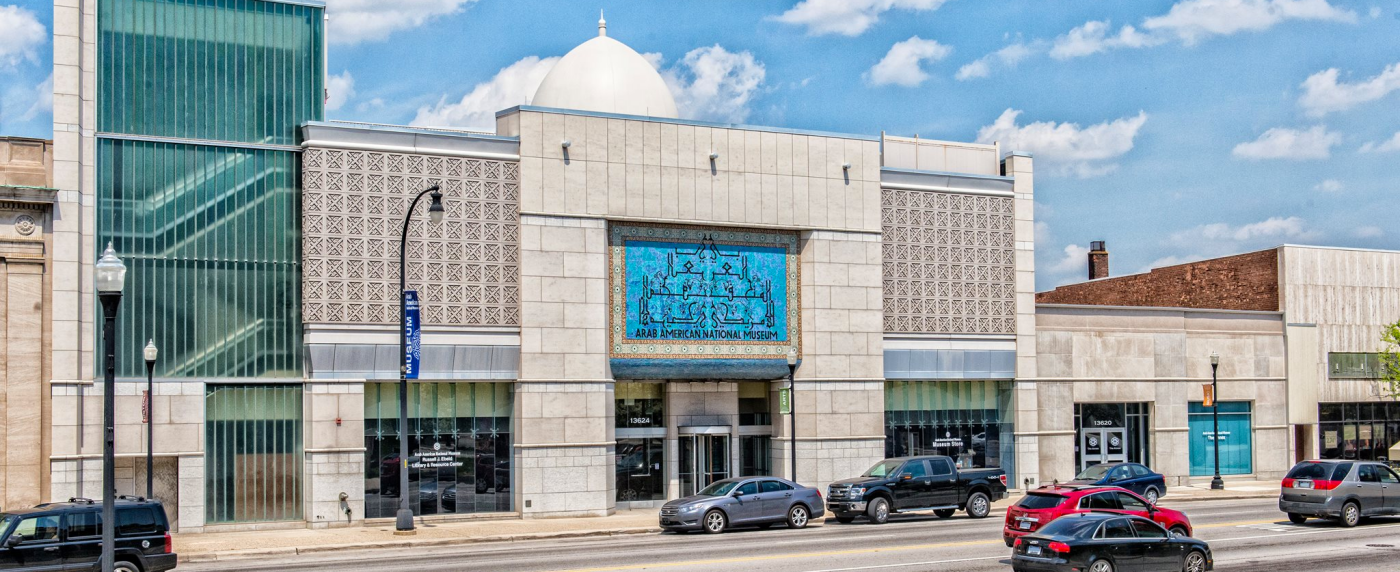
“There are many different ways to interact with the museum, or you can just come to the library to do research,” Dr. Stiffler says. “It depends on what you’re here for, but if you’re mainly coming to see the exhibits and learn about Arab Americans, it will take you 1-2 hours depending on whether you stop to read every display or simply like to stroll.”
When first walking past the entry doors, it’s hard to miss Ali Alia’s multimedia installation “al-Fala,” a Yemeni futurist starship that is suspended from the second floor and weaves through the stairwell center and beyond. Digital displays line the exhibit’s metal tentacles and feature experimental videos. It beckons museum guests to follow it to the second floor, where Dr. Stiffler recommends starting a tour.
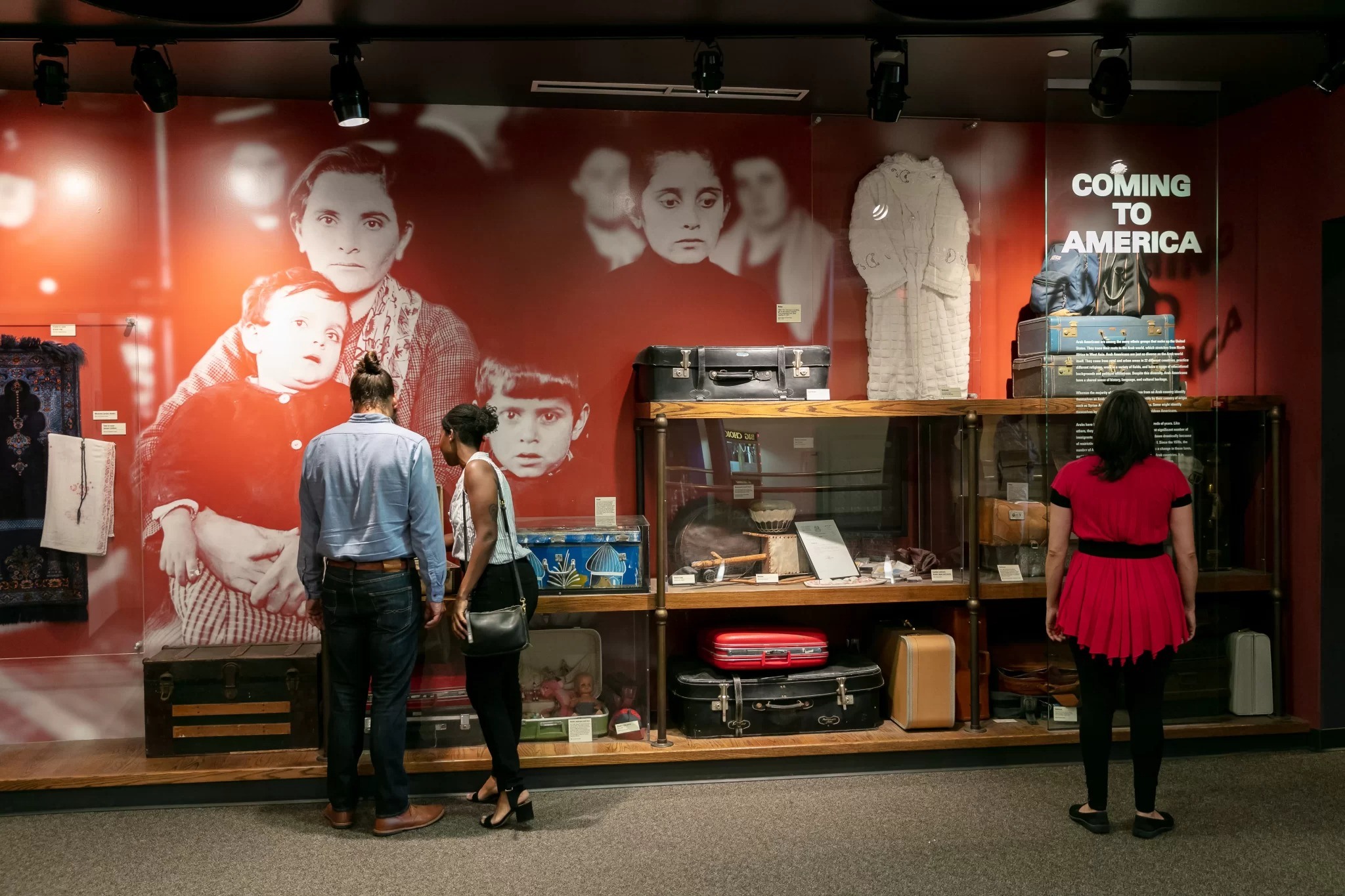
Arab American Museum, Michelle and Chris Gerard
Here’s what to see in the second level’s core galleries:
Coming to America
This exhibit that meanders through rooms and hallways serves as a timeline, telling the stories of Arabs who have come to the United States for the last 130-plus years to make it their home. Though some Arabic speakers arrived in North America as enslaved people centuries earlier, this exhibit focuses mostly on the 19th century to the present and displays many donated items and artifacts.
Living in America
To understand how Arab immigrants acculturated, take a walk through this gallery, which details everything from the professions they took to religious practices, cuisines, traditions, and activism. There are several interactive pieces in this exhibit; be sure to listen to some of those!
Making an Impact
This third core gallery is what Dr. Stiffler refers to as a sort of “Hall of Fame” of Arab Americans. Scientists, engineers, designers, actors, artists, architects, musicians, writers, athletes, politicians, astronauts, and more—some highly recognizable, some maybe not—all have had a profound effect and influence on every aspect of American life.
Before leaving the second floor, explore the temporary exhibit in the atrium, currently “reCRAFTED Histories: An Installation by Zahra Almajidi,” which runs through May 6 of 2023, and view the soon-to-be interactive touchscreen map of the Arab world that hangs in front of the museum’s north-facing windows.
That’s not all. There’s still much to see when returning to the first floor.
Contributions from the Arab World
This exhibit is a series of displays lining the courtyard space that cover history, language, geography, mathematics, and other noteworthy offerings and achievements. There’s also a showcase of musical instruments that parses the different sounds in Arabic music. The walls themselves are a part of the exhibit, adorned with traditional mosaics and architectural elements associated with the Arab world, as well as the ceiling dome, which is a significant feature that can be seen from both the inside and outside.
The Temporary Galleries
This space houses changing exhibits that are either created by the museum or that travel there from other museums and cultural institutions. Cultivate & Grow: An AANM Artists + Residents Retrospective runs until May 6, 2023, and will be followed by a solo exhibition by Almigdad Aldikhaiiry, whose piece “Windmill People” is on display now. Get there before the closing date to also see “Souvenirs from the Future,” an installation by Dahlia Elsayed and Andrew Haik Demirjian that imagines the ideas and aesthetics of a city that does not yet exist. It’s vibrant, colorful, thought-provoking, and visionary.
The museum also shows films and will host the upcoming Arab Film Festival (AFF), and presents performances, talks & workshops, and literary, youth & family, and culinary programs. Dr. Stiffler suggests coordinating a visit with one of these supplemental activities to get even more out of the experience.
He says, “The purpose of the museum is to educate the general public about who the community is and to be a place where the community can see themselves, tell their stories, donate their family history, and really just be the institution that serves all of these functions.”
Before you go, stop in the Russell J. Ebeid Library & Resource Center, which has the most comprehensive collection of published materials about Arab Americans, and also serves as the reading room for the archive.
The AANM is open 11 a.m.-6 p.m. Thursdays and Fridays and 12-6 p.m. Saturdays. Admission is just $8, with a discounted rate for seniors (age 59-plus), students, and educators. It’s free for members.
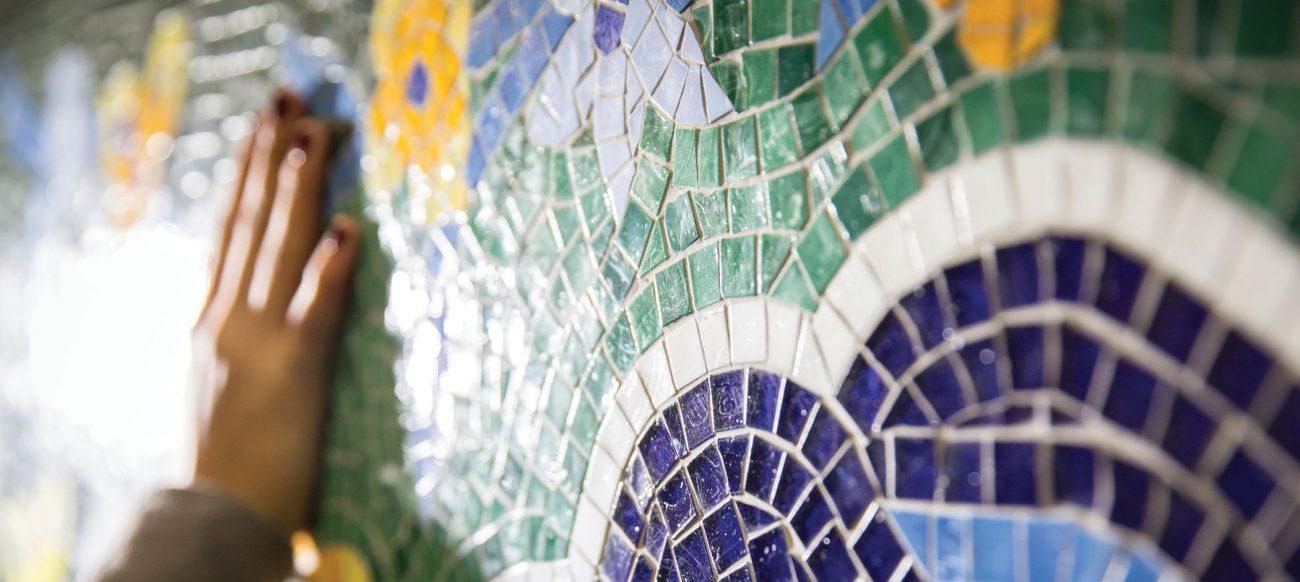
After you’ve completed your tour, don’t leave Dearborn just yet! Dr. Stiffler and the museum team have several favorite spots they recommend stopping. The following are just a few.
If you only have a little time, then prioritize Dearborn Fresh, as it’s right behind the museum and it carries a wide range of imported goods, as well as housewares and clothing, plus it has an in-house bakery, deli, and café.
For coffee and tea, there’s Yemeni-owned Qahwah House, the original area coffee shop, and Haraz Coffee House, also a Yemeni café, that serves delicious milk cakes. Sheeba Restaurant, Arbeel Kabab, and Al Ameer are popular eateries, while Shatila offers authentic Mediterranean pastries and Hashem's Arabic Store and Middle Eastern Market stock a variety of nuts, spices, sweets, and more.
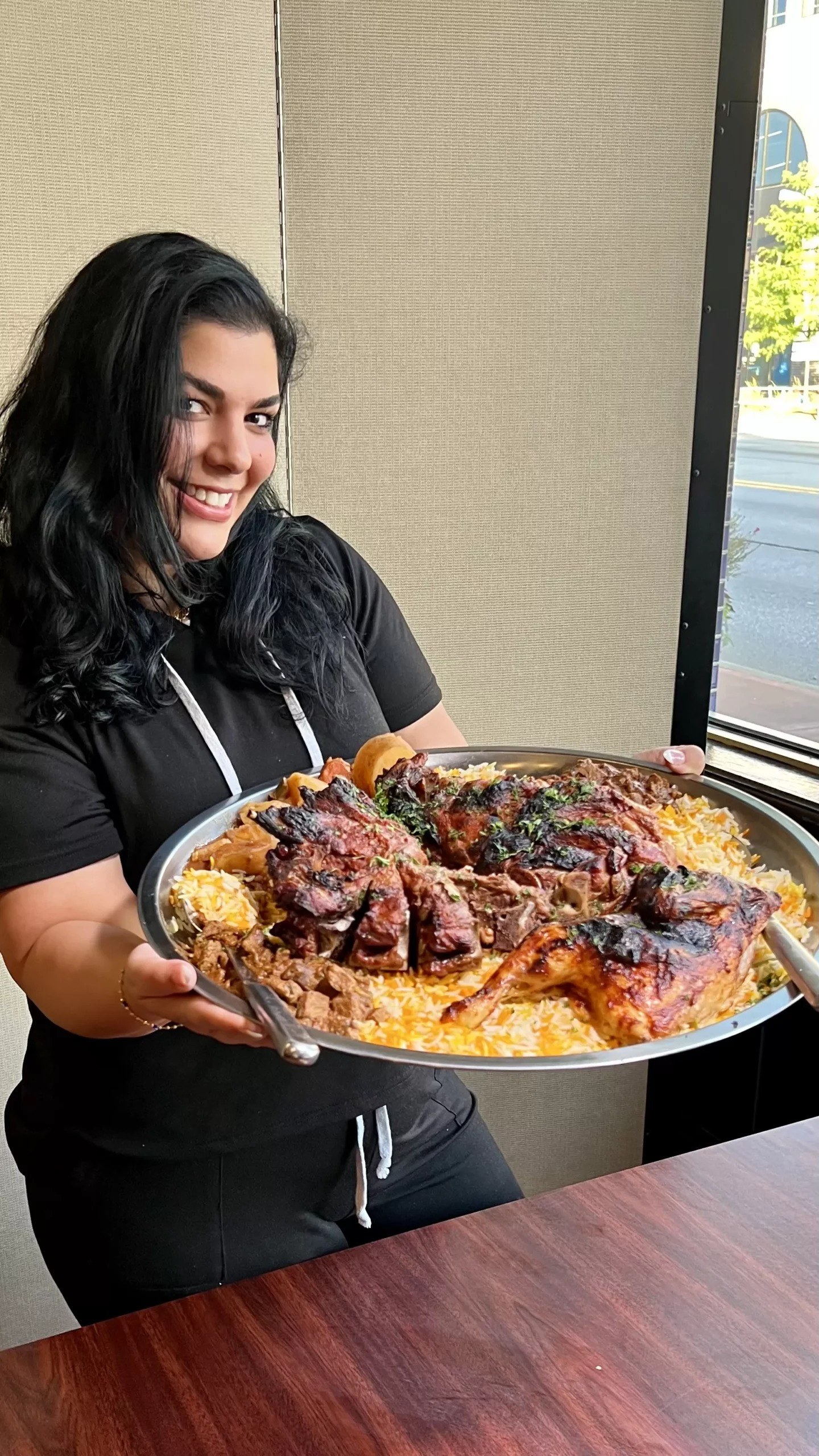 | 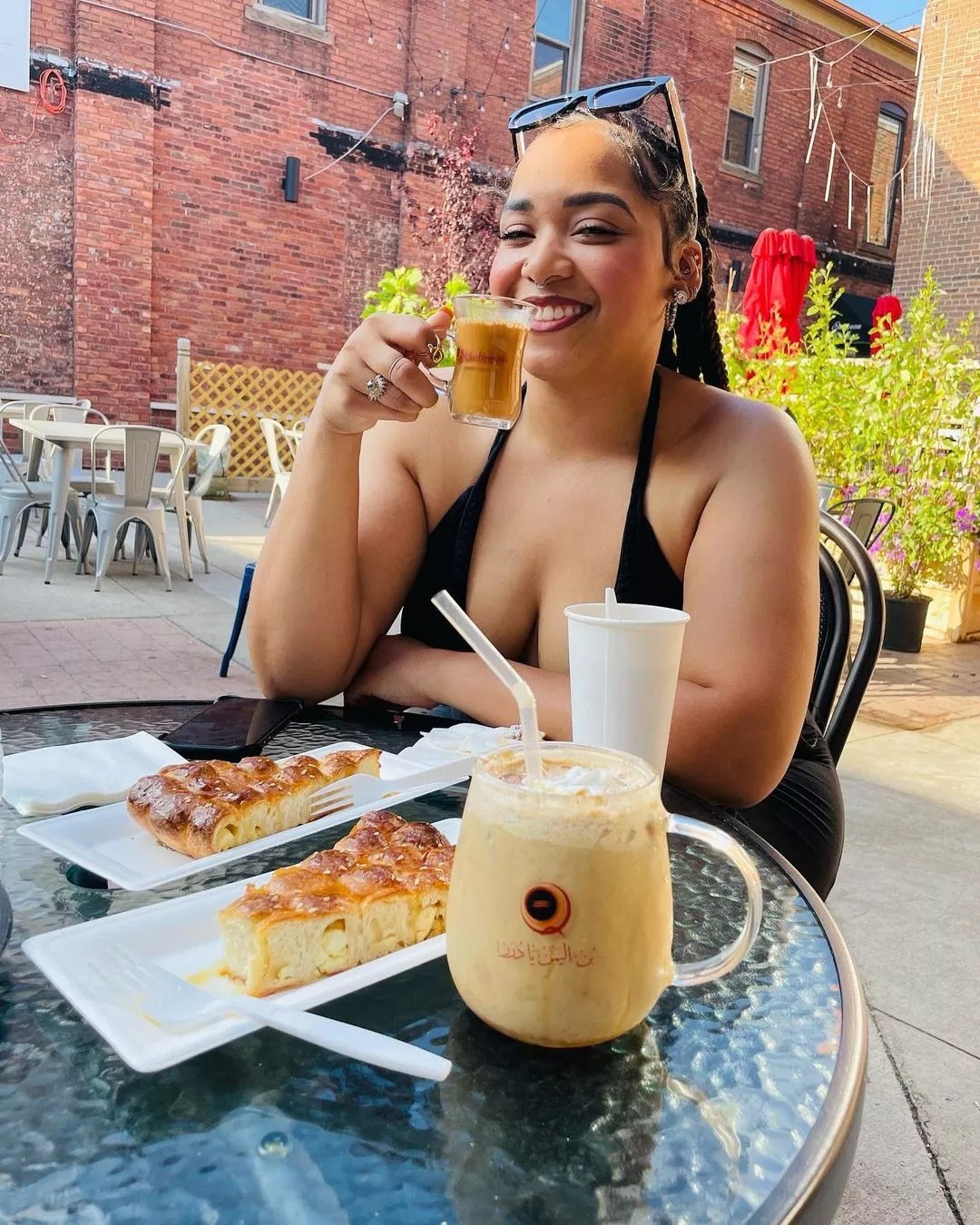 |
| Sheeba Restaurant, @detroithalaleats | Qahwah House, @kitalovve |
You May Also Like
If you live in metro Detroit, you probably know that our region is home to…
Filling a day in Wayne County — part of metro Detroit — is an easy task.
Just outside of Detroit and about 20 minutes from Detroit Metro Airport, you’ll find Dearborn…






